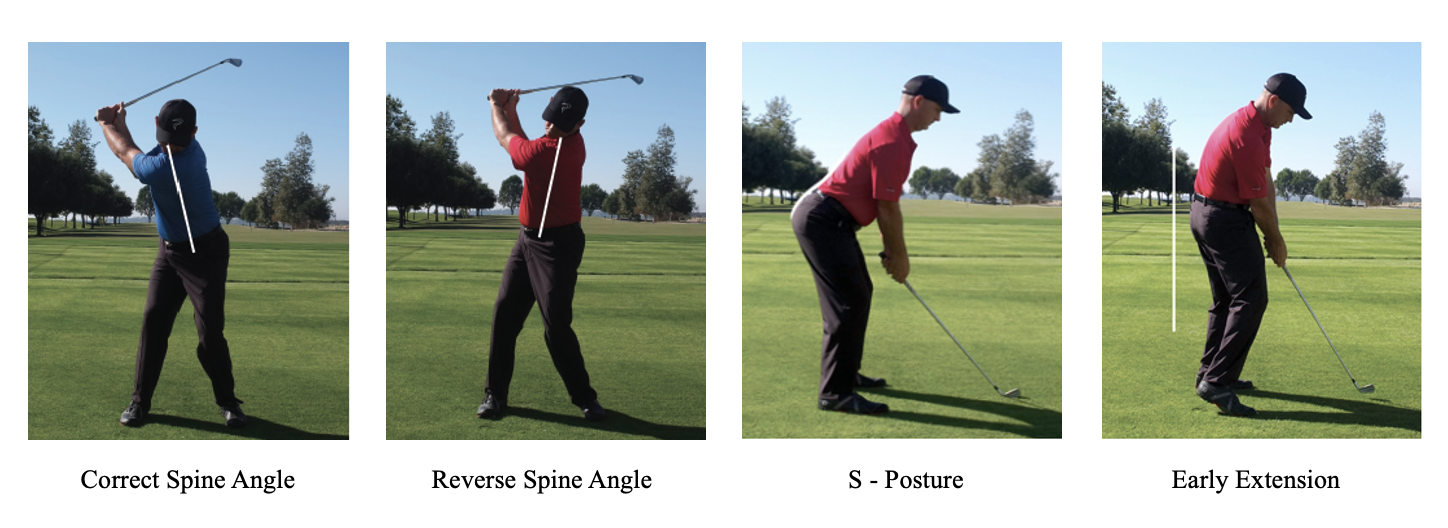
Low back pain is the most common injury that golfers experience and there are various causative factors that play a role in the development of low back pain. The lumbar spine is one of the primary stabilizers of the golf swing and is responsible for flexing, extending, rotating, and side bending at different points of the swing – whether it be at address/set-up, the backswing, or the downswing.
Common causes of low back pain in golfers include:
- Disc herniations (most common)
- Low back muscle strain or ligament sprain
- Facet syndrome – caused by excessive low back extension
- Degenerative joint disease
- Spinal stenosis
Other causes of low back pain can be due to the golfers swing mechanics:
- Reverse Spine Angle – seen in the downswing of golfers where there is excessive side bend in the lead side of the lower back
- “S” posture – excessive lumbar extension and upper back flexion at address
- Early Extension – excessive lumbar extension through impact, which places increased compressive force and pressure on the low back

When analyzing and assessing a golfer with low back pain, it’s important to address other key areas of the body that may also be contributing to the golfer’s pain. The two areas that we also want to evaluate are the hip joints and thoracic spine:
- Hip joints – throughout the golf swing, our hip joints are working through flexion, extension, internal rotation, and external rotation. Having adequate hip mobility is a key factor in the golf swing as it allows the golfer to rotate through the ball efficiently and effectively. When the hip joint lacks mobility, the lower back may overcompensate and try to make up for the lack of mobility, which can put increased stress on the lower back.
- Thoracic spine – similar to the hip joints, our thoracic spine (mid back) is an important area that requires mobility in the golf swing. Without adequate thoracic mobility, golfers will struggle to rotate through the backswing and downswing. If the thoracic spine lacks sufficient mobility, the lower back may overcompensate and try to make up for the lack of mobility, which can also put increased stress on the lower back.
Did you know? Dr. Vincent is Titleist Performance Institute (TPI) certified and has worked with and treated golfers all throughout the South Florida area. TPI is the world’s leading golf educational organization designed to study how the human body functions throughout the golf swing. TPI certified practitioners analyze how potential biomechanical limitations can impact a player’s swing and how these limitations can lead to potential injury.
Dr. Vincent Youngross, DC


